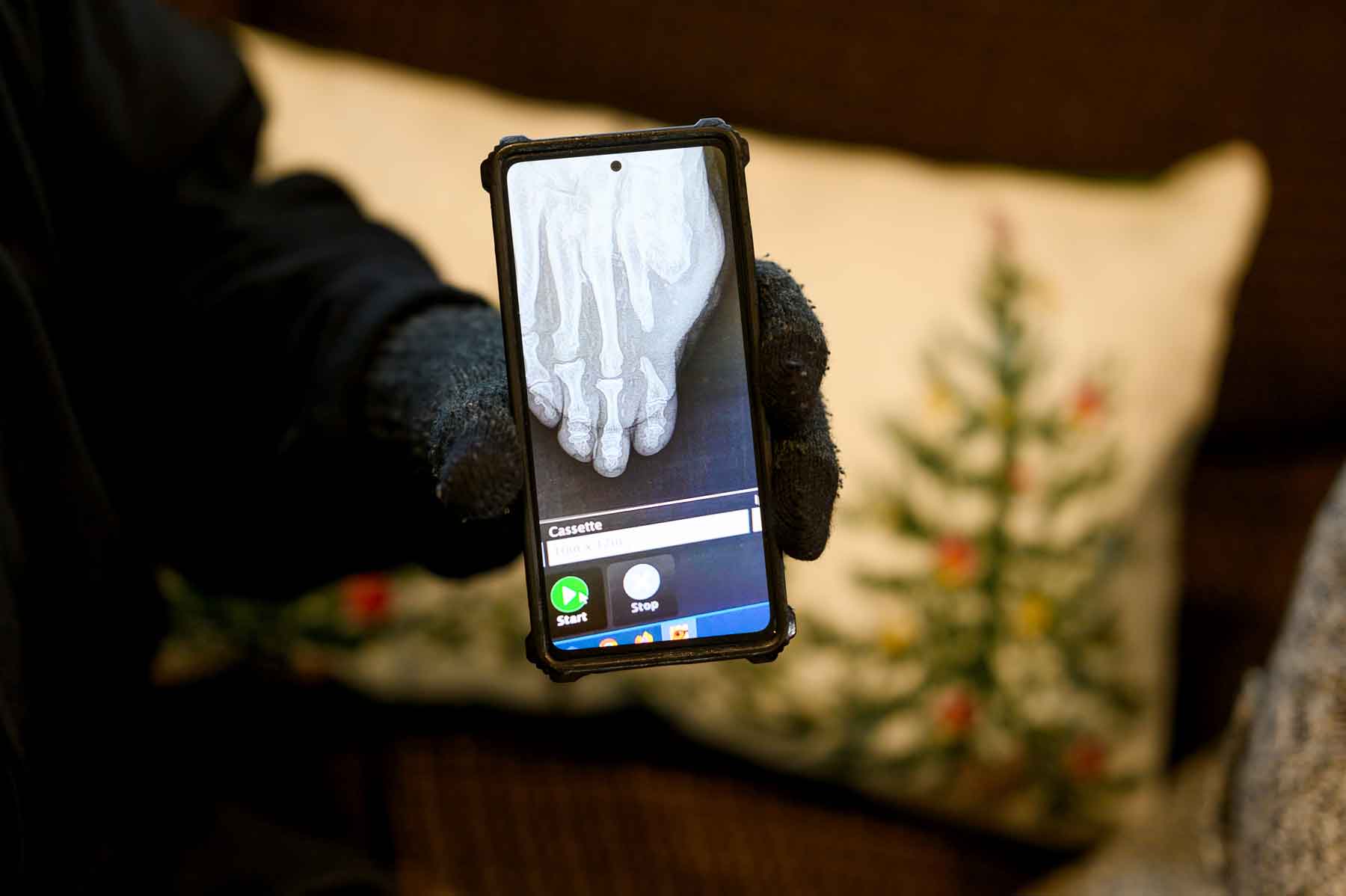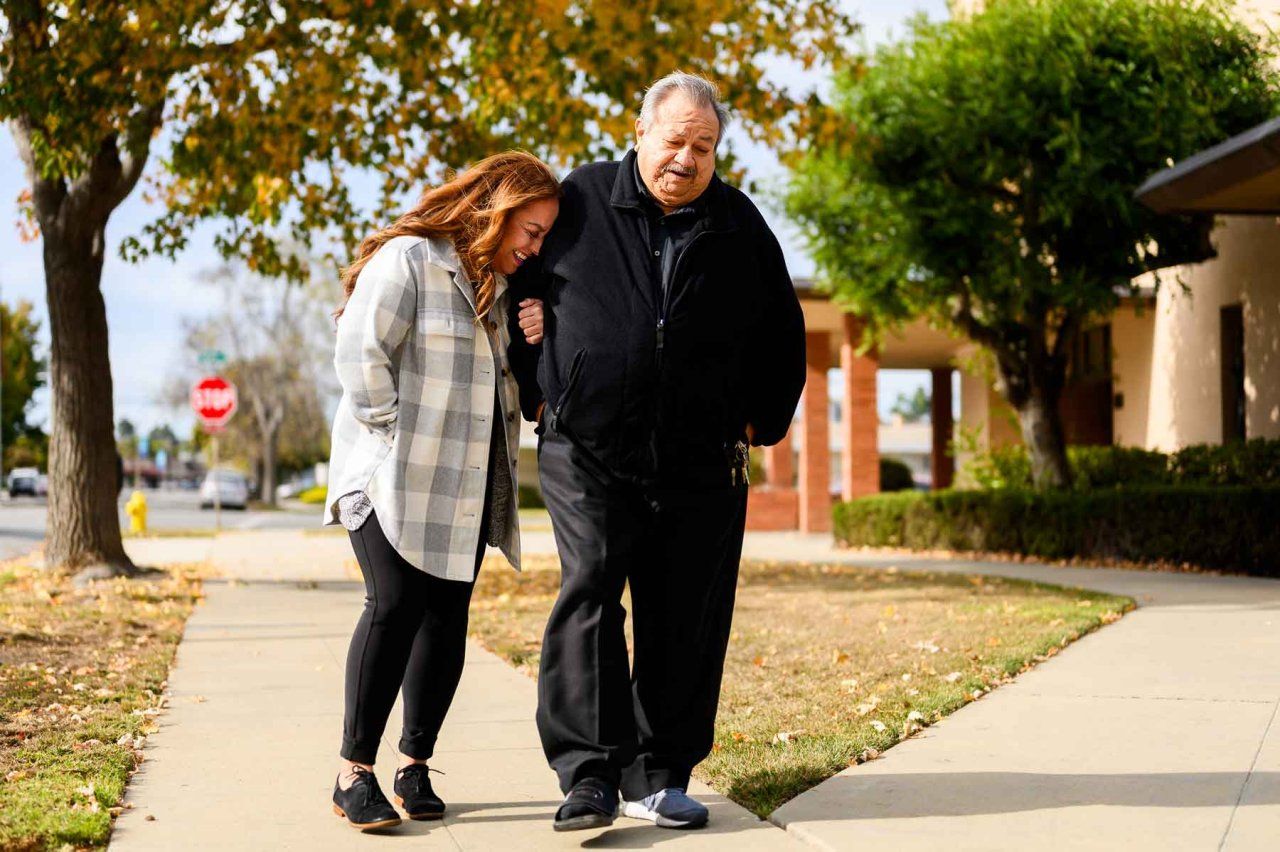Groundbreaking Amputation Prevention Center Provides Hope for Complex Cases
Rogelio Jacinto had five days until doctors planned to amputate his leg. It was an emotionally wrenching end to five months of unsuccessful visits to specialists to treat a diabetic foot ulcer.
The 72-year-old Salinas, California resident had accidentally cut his foot in late 2022 and it had become infected. Soon after, in December, doctors amputated his right big toe in an attempt to contain the infection. It didn’t work.
After months of advocating for her father with doctors and other health professionals, Ana Jacinto resigned herself.
“We, his kids, said, ‘We prefer you to be alive. If you need to cut your leg off and that’s the only option, let’s do it,’” said Ana, recalling a phone call with her dad. “I was trying to convince him that it wasn’t the end of the world, that he could still be self-sufficient.”
“We were both crying on the phone,” she continued, “and he said, ‘I can’t see my life that way.’”
In an effort to console her father, Ana opened her phone’s browser and searched for amputation support groups. The results brought up UCSF’s Center for Limb Preservation and Diabetic Foot.
“I looked at the website, and it said they take on the most challenging cases, patients with wounds that don’t heal, patients at risk of amputation — it was everything my dad had,” Ana remembered. “I called him that night and said, ‘Dad, you need to go to this clinic. Get your primary care physician to refer you.’”

Saving grace in the nick of time
Rogelio, like nearly 1 in 6 American adults, has diabetes. People with diabetes don’t produce enough of the hormone insulin needed to control blood sugar or can’t use it optimally. The disease can wreak havoc on the vascular system, resulting in poor blood circulation — especially in the feet and legs — and wounds and infections that won’t heal. The condition disproportionally affects communities of color, partly because of poorer access to healthy food.
… If treated aggressively and early, up to 80% of these amputations are preventable.”
About 120,000 people lose a leg or foot to amputation each year in the United States due to diabetes.
“There’s a huge and growing problem of diabetes and vascular disease, and amputation,” said vascular surgeon Michael S. Conte, MD, professor and chief of the UCSF Division of Vascular and Endovascular Surgery. “But, if treated aggressively and early, up to 80% of these amputations are preventable.”
In 2011, Conte co-founded UCSF’s Center for Limb Preservation and Diabetic Foot with podiatrist and UCSF professor Alexander M. Reyzelman, DPM, FACFAS. Today, the clinic offers a one-stop shop for some of California’s toughest cases of diabetic foot and leg ulcers. More than 200 patients each year see the center’s multi-disciplinary team of vascular and podiatric surgeons, alongside endocrinologists, cardiologists, plastic surgeons and rehabilitation professionals. Staffed by renowned specialists in amputation prevention, the clinic provides treatments and personalized follow-up care not available at most other facilities.
On the day Rogelio was slated to lose his leg, he and Ana arrived at UCSF’s Parnassus Heights campus. After extensive tests, doctors returned with good news. There were options to save Rogelio’s leg, including bypass surgeries to route more blood to his foot — a treatment not typically found at many other centers.
“Not all vascular and podiatric surgeons are interested in doing these complex procedures because it takes time. It’s not a ‘one-and-done’ procedure, you have to be committed and buy into walking that journey with the patient and their family,” said Reyzelman. “At UCSF, that’s what we do — our passion is to save limbs.”
The Center is the Bay Area’s first dedicated to amputation prevention and is a nationally-recognized center of excellence.
“What we have at UCSF’s limb preservation clinic is completely different to other clinics,” he explained. “We put podiatry and vascular together under one roof. We assess the patient together and devise a plan together so no time is lost.”
Research that shapes future patient care
Experts at the Center for Limb Preservation and Diabetic Foot don’t just treat patients, they conduct cutting-edge research, which is an added benefit for patients, Conte said.
“We’re doing research to help shape the future of diabetic foot care and amputation prevention,” Reyzelman added. “We’re really led by the latest evidence, and we use that to give our patients all the options we can, while explaining what they can expect with each.”
At UCSF, that’s what we do — our passion is to save limbs.”
UCSF limb preservation experts routinely help create national and international guidelines, setting the industry bar for the best care. Rogelio, for instance, was given the option of participating in a clinical trial that allowed him to receive stem cell treatments. Early research suggests treatments like these may promote healing.
Ultimately, UCSF surgeons used a minimally invasive procedure called an angioplasty to save Rogelio’s leg — inserting small balloons into several arteries to open them and restore blood flow to his foot. Nearly two-thirds of the clinic’s patients are successfully treated with minimally invasive procedures just like this.
To ensure he recovered without complications, Rogelio received nearly weekly in-person follow up care, first at the limb preservation center, then at one of the center’s Bay Area podiatry clinics closer to home.
“It was a miracle,” Rogelio said. “For me, all the doctors at UCSF — they’re angels. Because, for them, it’s more than a job. They really care about their patients.”
“I don’t just owe them my leg, I owe them my life.”


